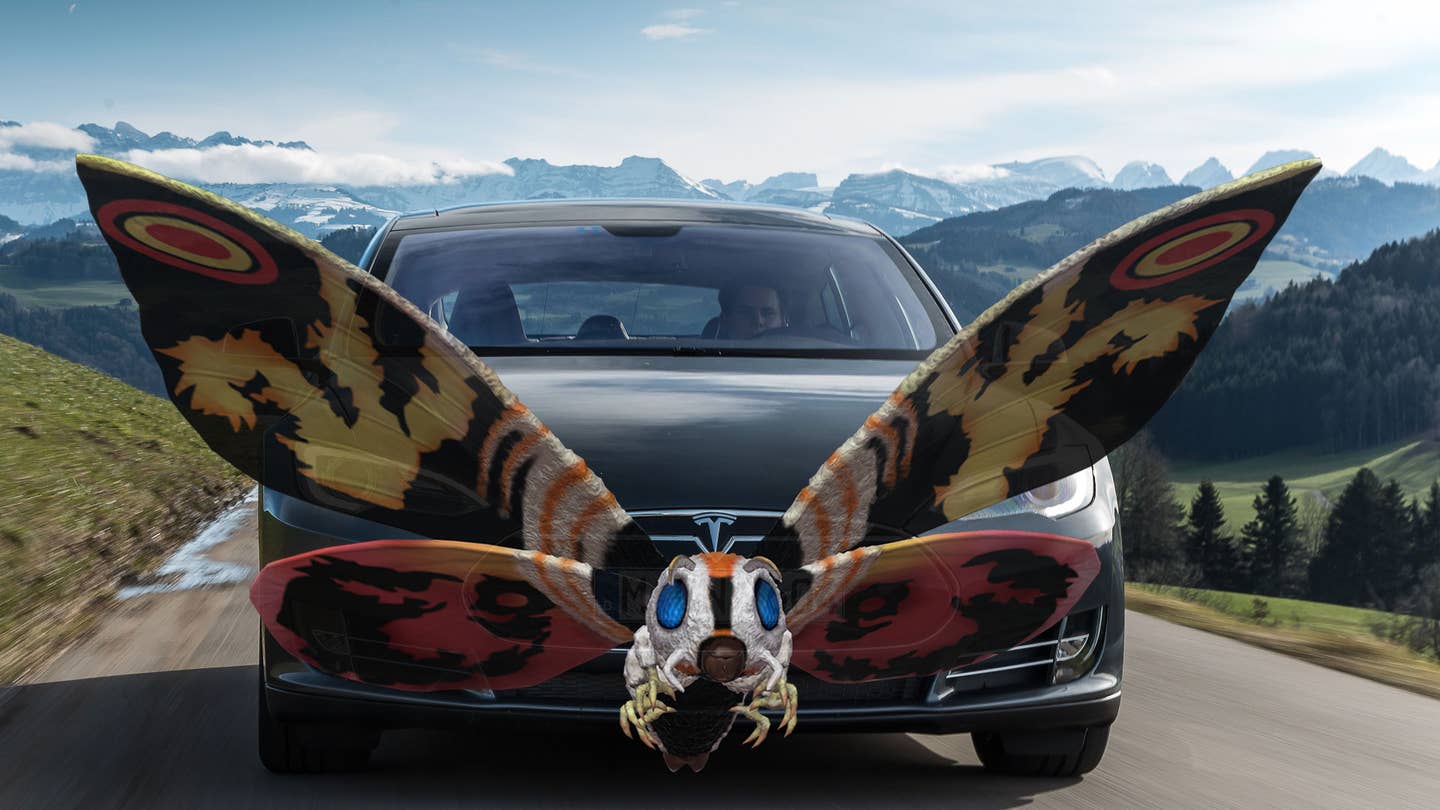A Tesla Model S’s Autopilot Was Knocked Out—By a Moth
In the car’s defense, it was one big honker of an insect.

Another Tesla Model S has suffered an Autopilot malfunction on the open roads of the American Southwest—but unlike the recent crash outside of Los Angeles, there's no contention about what caused the Tesla's self-driving systems to go haywire. Much like a Tokyo suburb in a Godzilla movie, the Tesla's Autopilot had been taken out by a giant moth.
According to the owner of the insect-injured Model S P90 D, who goes by the Reddit handle Redebo, the car was cruising along Route 93 between Las Vegas and Kingman, Arizona, running at a steady 85 miles per hour on Autopilot, when disaster, in moth form, struck.
"SUDDENLY, my driver console flashes red and commands me to take control of the vehicle," he wrote on Reddit. "[Autopilot] drops off. Cruise control drops off and I get the ominous warning, 'Radar visibility has been reduced.'
"I see a lone gas station up the road and slow my roll into the fluorescent lighting of the canopy covering the gas pumps. I step out of the car while a car of German exchange students look quizzically at a [Model S] parked next to a pump. Fearing the worst, I peek around the front of the car and was confronted with this sight," he wrote.
Redobo then posted an image of the kamikaze moth splattered against the Model S's forward radar window. Unfortunately, due to rights restrictions, we can't include the image here, but we have embedded a Twitter post containing the image below. (Caution: mottephobes should stop reading immediately.)
Much like mud, snow, road grime, and myriad other debris, insect impacts are theoretically capable of taking out not only Tesla's Autopilot system, but any carmaker's radar-based active cruise control system. By blocking the radar transmitter on the front of the car, dead bugs prevent the car from determining the distance between it and a vehicle in front. If the system is operating correctly, it should do exactly what Redobo's Tesla did: deactivate the cruise control and tell the driver to resume manual control.
As for the offending arthropod, Redebo said a quick swipe of the gas station's window washer squeegee was all it took to dislodge the mega-moth and restore Autopilot functionality.
